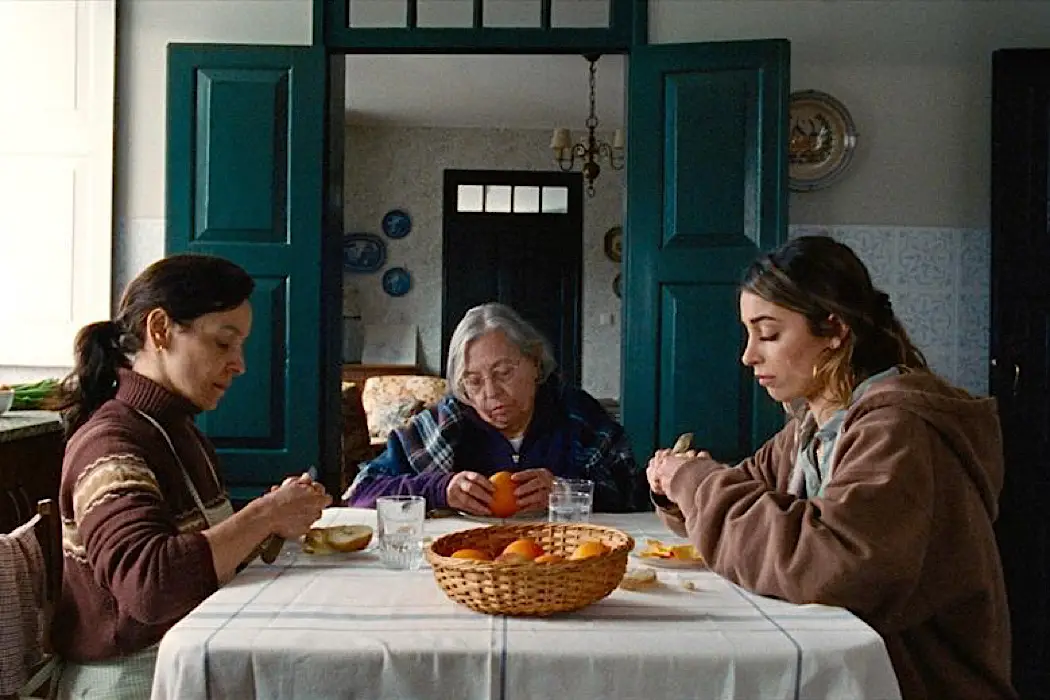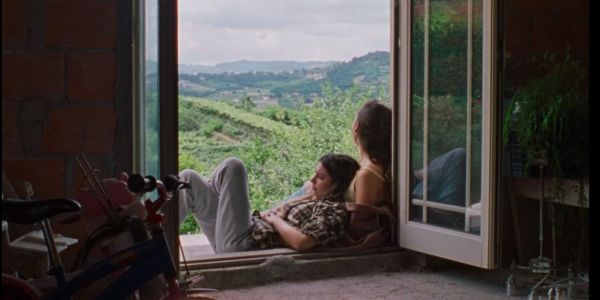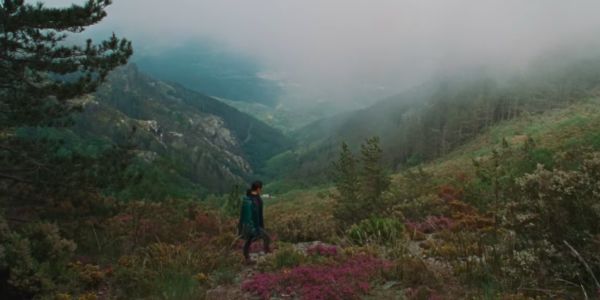Cannes Film Festival 2023: LEGUA

Massive film lover. Whether it's classic, contemporary, foreign, domestic, art,…
There’s the relative normalization of what some refer to as “slow cinema” or contemplative cinema, movies whose locus is cultivated by an alchemical realization of mood and atmosphere. Filmic expression as a sensorial experience rather than a story-driven or narrative-based assemblage, it’s a subtly bold but wonderful facet of our modern landscape, but, like anything else, it can show cracks. This isn’t entirely the case for Légua, it’s a feature with various artistic virtues and moments of stunning visual prowess and a strong tendency toward mood and atmosphere.

Opening with a long take of semi-ironic posturing of pop music along a length of a dark road. The film is grainy and almost damp. There’s an eerie quality to it which is a sign of Guerra and Reis’ prowess as directors, obviously credit to cinematographer Vasco Viana as well; there’s a lot to be said for the currency of artful photography. There’s a delicacy in the ways in which the camera finds mysteries and vagaries in the images; it’s another layer of elusive artistry throughout the film. There’s a charge one gets when looking at the lead actor Carla Maciel has a natural magnetism; she doesn’t command a scene, more like the screen endures her enigmatic features, stony, beautiful, natural, with a screen presence not unlike Frances McDormand. After an inter-diegetic score swing, Ana (Maciel) dancing, singing along to a bouncy, passionate pop song, the kind of flamboyant energy you emit when you think no one’s watching. Her husband enters, and after some silly facial gestures, the two begin to make love, a passionate flare of age-appropriate sex between a married couple, kind of reassuring in a way.
The Enigma and the Other
Once we segue into the following day, Ana performing menial tasks with an older companion/co-worker, unfolding linens, and making beds, the older woman Emília is set on details, and specifics, urging Ana not to shirk her duties, lest she incur the wrath of their employers, an unseen, exists by-reference-only owners of this remote locale. “Things have to be done correctly, and that’s that. That’s how it’s always been done here and how it will always be.” Emília quips at Ana, almost scolding; this intergenerational exchange is tangential to the overall tenor of the film. Légua is a film built from the enigma of the other; it’s almost folksy in its tribalist sense of otherness. The consistent tenor is one of miasma, a warbling threat of an unseen enemy; the film is built on an unattainable foundation of allegorical notation, not so much allegorical rhetoric.
This is very much a film cut from the mold of Claire Denis. Rituals, chores, and the doldrums of banal tasks take on this transformative hypno-drone of intrigue and mystery. Characters, motives, and actions evoke an overflowing wave of intrigue. Is there some savage climax lurking around the corner? What is really at stake? Is there some other force at bay? What is this film building?

Well, that’s part of the foundational thrust of Légua; the other is a little more transparent and doesn’t juice the narrative accelerant (if you can call it that) in that broody, alluring manner that defines the moody subset or incidental genre of slow, meditative cinema. Guerra and Reis, who scripted the film with three other credited writers (José Filipe Costa, Sara Morais, and Leticia Simōes), conjure up enticing visual ambiance and inoculate the scenery with subliminal curiosity; there’s dramatic solvency in the stillness. If you calibrate your attention to the frequency jutting through the walls, hallways, and staircases, you’ll enjoy getting a little lost in the movie; there’s a spooky vibe coursing throughout. Légua doesn’t lean into any genre furnishings; it courts a whispery degree of Jamesian horror, both MR and Henry for that matter, while there are sojourns into surreal expression, suggestive bursts of uncanny imagery (Ana enveloped in a billowing sheet is a memorable jolt of nightmare fuel) the films motivated to stay in the obscured, liminal space of murky interiority.
Generational Evocations
The murky evocations are used to direct us to look at three generations of women; there Ana, her older mentor Emília, and Ana’s daughter Monica. There’s a sense of identity, and these women are very much a central pulling force in the narrative. Monica’s often accompanied by her friend; they swap clothing and go out; you can glean that they have a world between one another, just as Ana and Emilia share something as well. However, Emilia and Ana represent more of a maternal, less fraternal dynamic. When Emilia falls ill to an aggressive strain of cancer, Ana takes the mantle of caring for her; despite not being family, there’s this devotion that’s deeply felt but seldom explained. Except in an argument between Ana and her daughter Monica where she defends Emília, saying “She helped me raise the both of you!”
The commentary of service and serving is prevalent. Emília seems to be blindly devoted to a living space occupied by unseen people; Ana is not only indebted to Emília but the house as well, almost as if she were carrying on a tradition cultivated by Ana and seeing herself transform or needing to fill the void that her dying companion would undoubtedly leave. Meanwhile, the contentious air between Monica and her mother also provides gravitas, as if they see and recognize each other in one another, and raises emotional and psychological signals of remorse and longing. This idea of servitude extends into an earthy and sumptuous territory; long shots of foggy exteriors, Ana tending to the farm, and burning brush are some of the film’s most flavorful moments; its balance of interior/exterior is brilliant.

Breathe Me In- The Persuasion of 16mm
Shot on 16mm, Légua is at times delicious; the inky emulsions, saturated blues, and earth tones are enough to seduce any inquiring mind, but there’s a disconnect in the characterizations, the film, in its entirety, looks and feels profound, but there are moments when it wanders a bit too far, leaving us a little unmoored, lost, not in that baffling, invigorating way but in some ways the movie distances us from it when it should pull us in, whisper in our ears, let us in on some more of the secrets that live in between the walls.
Slow Cinema: what does it mean? I wouldn’t categorize Légua as a piece of “slow cinema” because the moniker is a bit of a misnomer. But that begs the question, what is slow cinema, and if it is, in fact, a genre, where does it begin, or what typifies this movement?
Watch Légua
Does content like this matter to you?
Become a Member and support film journalism. Unlock access to all of Film Inquiry`s great articles. Join a community of like-minded readers who are passionate about cinema - get access to our private members Network, give back to independent filmmakers, and more.
Massive film lover. Whether it's classic, contemporary, foreign, domestic, art, or entertainment; movies of every kind have something to say. And there is something to say about every movie.













